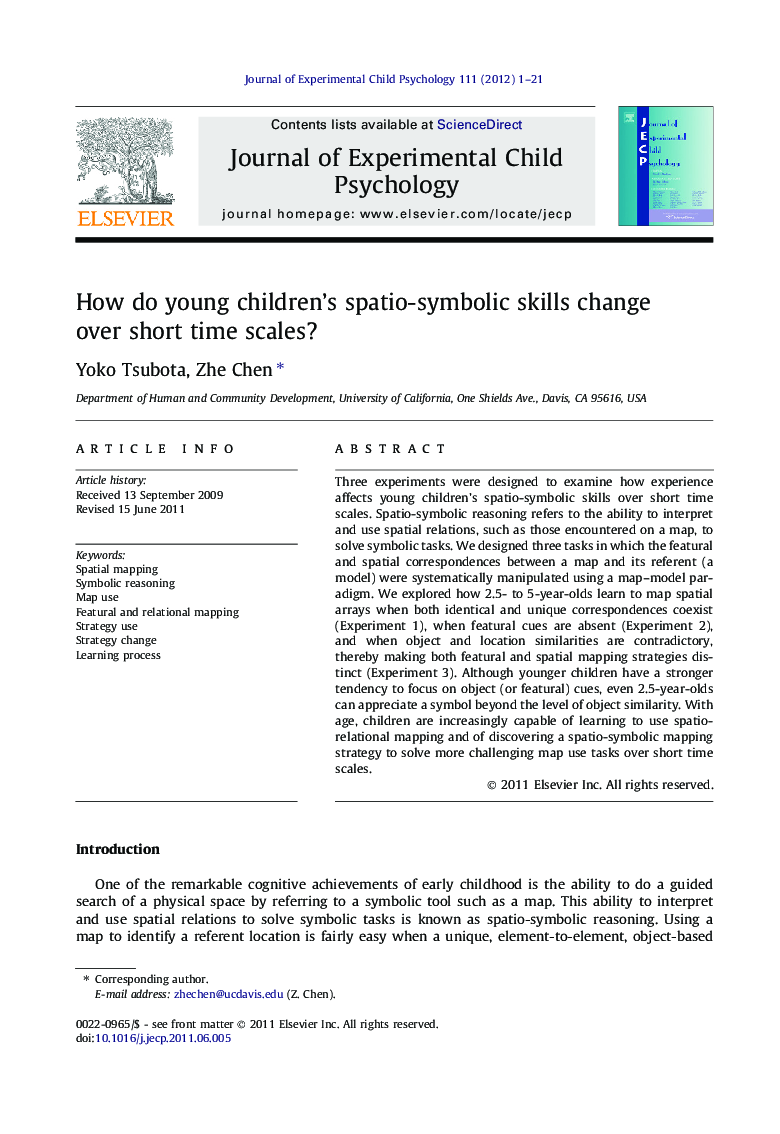| کد مقاله | کد نشریه | سال انتشار | مقاله انگلیسی | نسخه تمام متن |
|---|---|---|---|---|
| 918341 | 919475 | 2012 | 21 صفحه PDF | دانلود رایگان |

Three experiments were designed to examine how experience affects young children’s spatio-symbolic skills over short time scales. Spatio-symbolic reasoning refers to the ability to interpret and use spatial relations, such as those encountered on a map, to solve symbolic tasks. We designed three tasks in which the featural and spatial correspondences between a map and its referent (a model) were systematically manipulated using a map–model paradigm. We explored how 2.5- to 5-year-olds learn to map spatial arrays when both identical and unique correspondences coexist (Experiment 1), when featural cues are absent (Experiment 2), and when object and location similarities are contradictory, thereby making both featural and spatial mapping strategies distinct (Experiment 3). Although younger children have a stronger tendency to focus on object (or featural) cues, even 2.5-year-olds can appreciate a symbol beyond the level of object similarity. With age, children are increasingly capable of learning to use spatio-relational mapping and of discovering a spatio-symbolic mapping strategy to solve more challenging map use tasks over short time scales.
► Microgenetic tasks to examine the processes of discovery and learning spatial mapping.
► Systematically manipulated featural/spatial cues as well as the levels of feedback.
► Children as young as 2.5-year-olds map spatial relations between spaces.
► Older children divert their attention to less distinctive spatial cues.
► Initial preference for featural cues makes spatial similarity less noticeable.
Journal: Journal of Experimental Child Psychology - Volume 111, Issue 1, January 2012, Pages 1–21